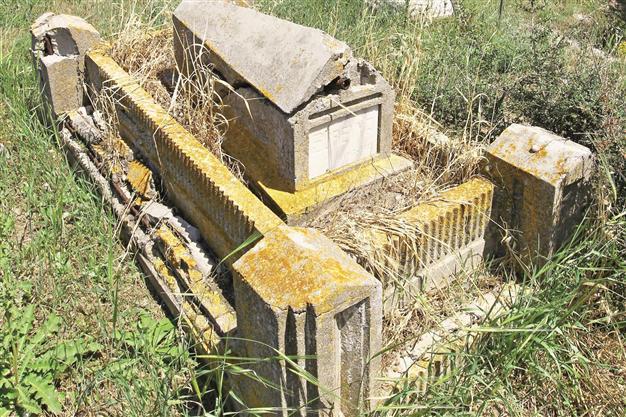Island keeps diseases away from Anatolia
İZMİR - Anatolia News Agency

The Ottomans kept contagious diseases out of the region thanks to the quarantine station located on an island in Urla. AA photo
Urla Quarantine Island, which was built during the Ottoman Empire, prevented deadly illnesses like plague, typhoid or typhus from entering Ottoman territory for some 150 years and had a significant mission to protect the health of the Anatolian people. It has been proposed to make the facility a health museum.Urla Quarantine Island director Şaban Koçoğlu said the country had taken measures against a contagious disease called the “black death” when it was common in the 1800s and the Ottomans turned the island in İzmir’s Urla into a quarantine area in 1865 for those arriving to Anatolia by sea.
He said the modern quarantine station was established on this island of 323,000 square meters and was an important place for the protection of health in Ottoman lands.
Koçoğlu said those who went on pilgrimages through the Balkans had a health check on the island and the Ottomans kept diseases out of the Islamic region thanks to this island.
“According to documents, more than 1,000 passengers came to this island for some days after long ship journeys. It is normal that people get sick during long ship journeys. It was important to detect the disease upon entrance. Documents show that contagious diseases were not common in this period in the Ottoman Empire. This island was a great reason for this fact,” Koçoğlu said.
How the quarantine station worked
Koçoğlu said ships from abroad anchored one mile offshore and a doctor, the station’s director and a registering director went to the ship to register ill passengers.
“Those with a contagious disease were taken to separate boats and kept in patient rooms called ‘isolation pavilions.’ Through a rail system, the belongings of passengers were taken to the sterilization sections of the quarantine station,” he said, adding that passengers were also taken to a shower area with new towels, loincloths and sabots.
“Their clothes were disinfected in the sterilization unit. After having a shower, they were hosted in special places and offered food and drink. Then next was a doctor exam. If no one on the ship was ill, the passengers were permitted to go after the check. If even one passenger was ill, all passengers were kept in guest houses until the patient got better or died. During this time, the other passengers’ health was monitored,” Koçoğlu said.
Koçoğlu said the Ottoman Empire was a model for the world in many fields, and one of those was this island. “Passengers who died on the island were buried there. The deceased were buried with their own religious rituals. Jews, Christians and Muslims have been lying on the island together for some 150 years.”
Koçoğlu said there were three quarantine stations established on islands in the world; one in Croatia, the United States and Turkey. “The best preserved one in terms of equipment and original structure is in Turkey. It is still functional. The island served until 1952, when the need for this station ended with the developments in the health sector.”
He said they applied to the Culture and Tourism Ministry in 2011 to turn the island into a health museum. “If it becomes a museum, we will show the world the success of the Ottoman Empire on this island.”
















